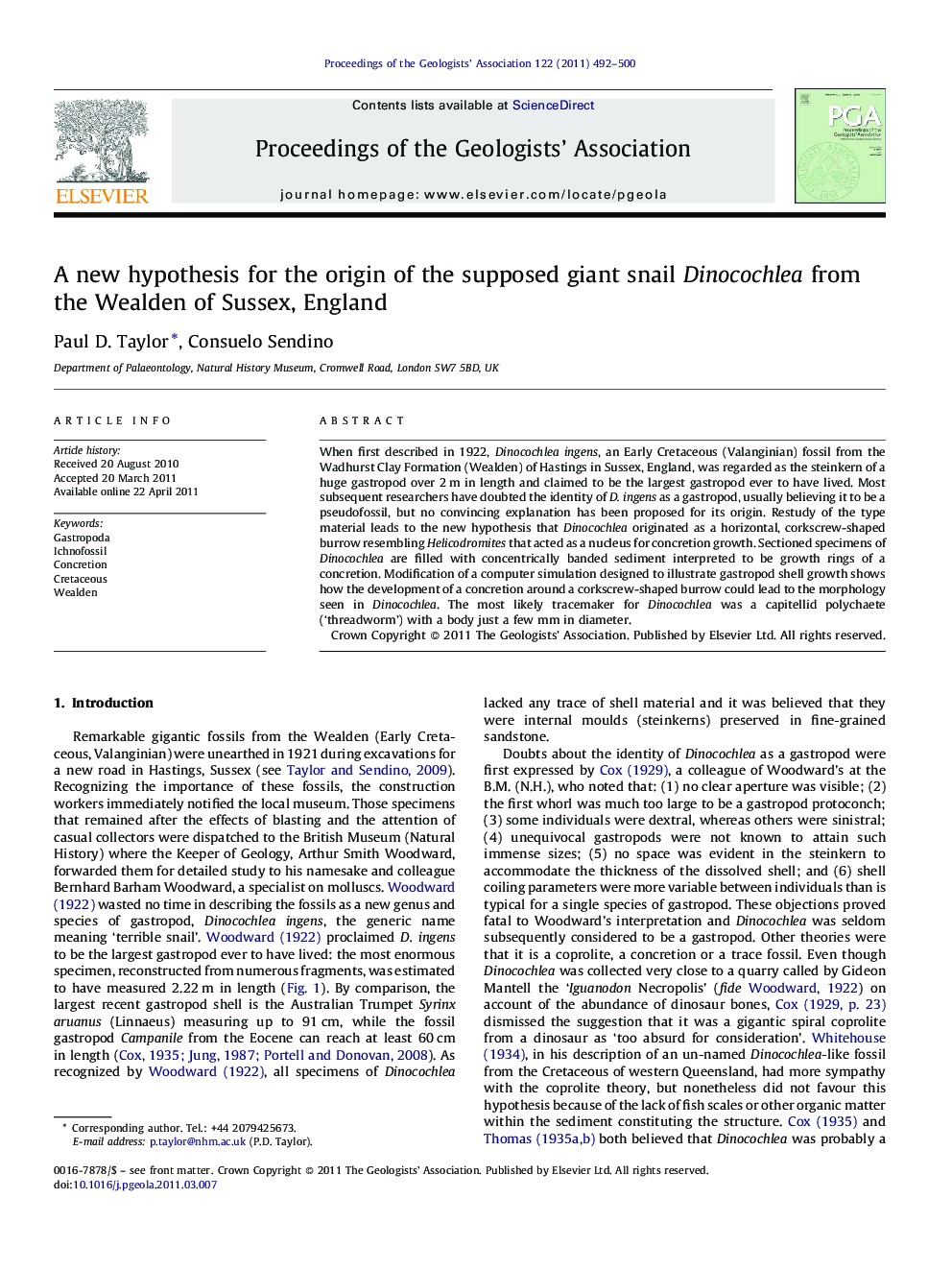| Article ID | Journal | Published Year | Pages | File Type |
|---|---|---|---|---|
| 4734828 | Proceedings of the Geologists' Association | 2011 | 9 Pages |
When first described in 1922, Dinocochlea ingens, an Early Cretaceous (Valanginian) fossil from the Wadhurst Clay Formation (Wealden) of Hastings in Sussex, England, was regarded as the steinkern of a huge gastropod over 2 m in length and claimed to be the largest gastropod ever to have lived. Most subsequent researchers have doubted the identity of D. ingens as a gastropod, usually believing it to be a pseudofossil, but no convincing explanation has been proposed for its origin. Restudy of the type material leads to the new hypothesis that Dinocochlea originated as a horizontal, corkscrew-shaped burrow resembling Helicodromites that acted as a nucleus for concretion growth. Sectioned specimens of Dinocochlea are filled with concentrically banded sediment interpreted to be growth rings of a concretion. Modification of a computer simulation designed to illustrate gastropod shell growth shows how the development of a concretion around a corkscrew-shaped burrow could lead to the morphology seen in Dinocochlea. The most likely tracemaker for Dinocochlea was a capitellid polychaete (‘threadworm’) with a body just a few mm in diameter.
